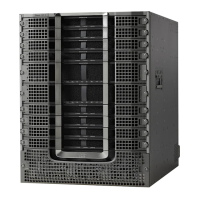3
UDP
4
IP
Since NLS is implemented on the UDP protocol, there is a potential of message loss. If messages are lost,
the controller will re-send the CPD request in any such event.
Note
Control Relationship
A control relationship between a control point and a controller is identified as a function on a media flow that
passes through a control point. A control relationship is uniquely defined by a control relationship type (CR
TYPE) and control relationship ID (CR ID). The CR ID is provisioned on CMTS as well as the controller.
The table lists the supported CR TYPEs and corresponding pre-defined CR IDs
Table 19: Supported Control Relationship Types and Corresponding Control Relationship IDs
Pre-Defined Corresponding Control Relationship IDControl Relationship Type
CR ID = 1: CMTSCR TYPE = 1 (Lawful Intercept)
CR ID = 2: Aggregation router or switch in front of CMTS
CR ID = 3: Aggregation router or switch in front of Media
Services
CR ID = 4: Media Gateway
CR ID = 5: Conference Server
CR ID = 6: Other
CR ID = 1: CMTSCR TYPE = 2 (DQoS)
CR ID = 1: CMTSCR TYPE = 3 (PCMM)
How to Configure CPD
Enabling CPD Functionality
To enable the CPD functionality, use the cpd command in global configuration mode. The CPD message
authentication is determined by NLS configuration.
Before You Begin
The CPD message authentication is determined by NLS configuration.
Cisco cBR Series Converged Broadband Routers Troubleshooting and Network Management Configuration Guide
for Cisco IOS XE Fuji 16.8.x
101
Control Point Discovery
How to Configure CPD

